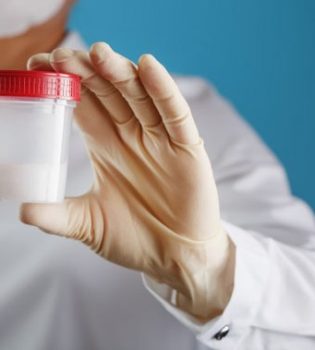In a couple who cannot conceive, the problem is 40% related to the man, and 20% is related to both the man and the woman.
Male reproductive physiology
GnRH, which is secreted pulsatilely (in the form of fluctuations) from the hypothalamus in men as in women, stimulates the secretion of FSH and LH hormones from the pituitary gland. While LH ensures the secretion of testosterone from Leydig cells in the testicles, FSH initiates spermatogenesis (sperm production) by acting on Sertoli cells. Sperm mature in approximately 72 days and are transported to the area in 14 days where they will be stored.
Sperm’s ability to fertilize as they are produced is very weak. Before they reach the ejaculation stage, they must turn into a liquid called semen. About 60% of the semen with a volume of nearly 4 ml. is formed by the structure called seminal vesicle. The liquid provided by this vesicle allows the semen to take its final shape. Prostate secretions make up 20% of the semen, and this fluid contains acid phosphatase and proteolytic enzymes that provide liquefaction (“dilution”) of the sperm. Since the prostate is the outermost organ, the first fluid to be discharged during ejaculation is the prostate fluid, and the most viable sperms are contained in this fluid.
Causes of male infertility (Male factor)
In male infertility, disorders such as varicocele (enlargement of the vessels around the testicles) originating from the testicle and neighbouring tissues are common.
The rate of sperm conduction canal disorders due to gonorrhea and other infections is 8-10%.
Hyperprolactinemia (high level of prolactin hormone) and other hormone disorders are the cause of infertility with a rate of 1%.
Problems with sexual intercourse: Premature ejaculation, inability to orgasm, impotence (non-erection of the penis) are among the most common causes.
Klinefelter syndrome: this syndrome refers to a chromosomal abnormality of 47 XXY (male’s normal chromosome structure is 46 XY). Sperm cannot be produced due to the extra X chromosome. It is a rare condition. There may be a small number of sperm production in the mosaic chromosome structure (the fact that some cells have normal chromosome structure besides the 47 XXY structure).
Unknown causes: In most of the investigations made for male infertility, no cause can be found.

Examination and examinations in male infertility
Urological examination
spermiogram,
when necessary, antisperm antibodies (the fact that some substances in the blood of the man have a disruptive effect on the function of sperm),
when necessary, LH, FSH, prolactin levels
in doubtful cases, karyotyping (chromosome mapping) for the investigation of Klinefelter syndrome,
testicular biopsy: (Azospermia is an advanced examination to search for sperm in the testis in case there is no sperm)
Treatments applied to create pregnancy in cases of male infertility
The treatment is performed by a urology specialist for the cause found.
Varicocele operation: Varicocele is a condition that can be found in 8-10% of healthy and fertile (able to conceive) men. Therefore, before the decision of surgery is made, it is necessary to make sure that the disorder in the spermiogram is due to this reason.
Vasectomy (“binding the ducts in the male”) reversal operations
Opening the blockages in the sperm conduction channels
Treatment with hormones and other drugs
IUI (insemination applied to the woman-“insemination”: In this method, the most mobile sperms taken from the man on the day of ovulation of the woman are taken with special methods and transferred to an injector, and the sperms in this injector are given to the intrauterine cavity of the woman with a special method).
As an advanced stage of the microinjection (IVF) method, one of the sperms is injected into an egg cell under a microscope and the embryo formed a few days later is placed in the uterine cavity of the woman.
Donor sperm insemination (not applicable in Turkey. Sperms taken from the sperm bank are transferred to the woman.)








